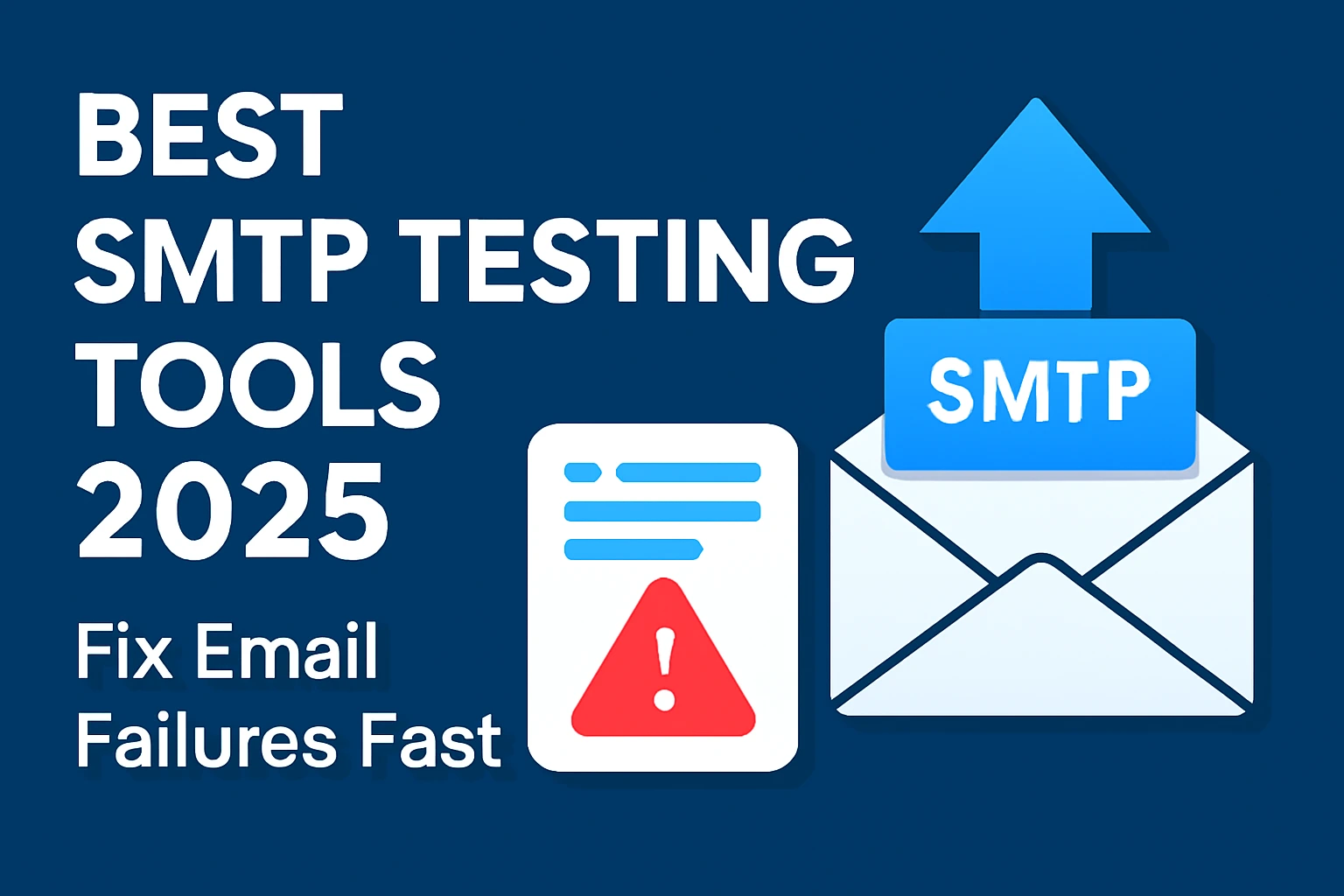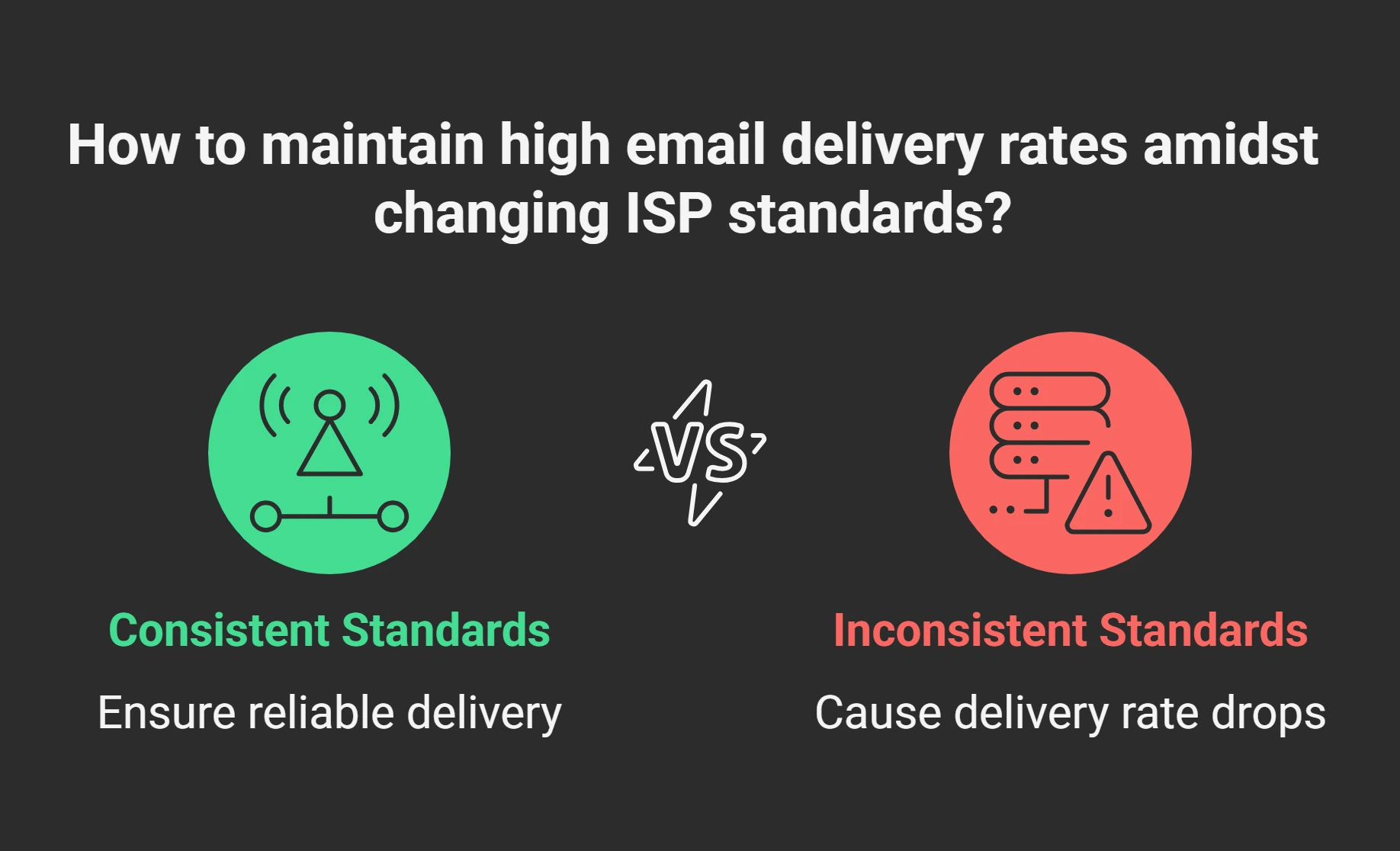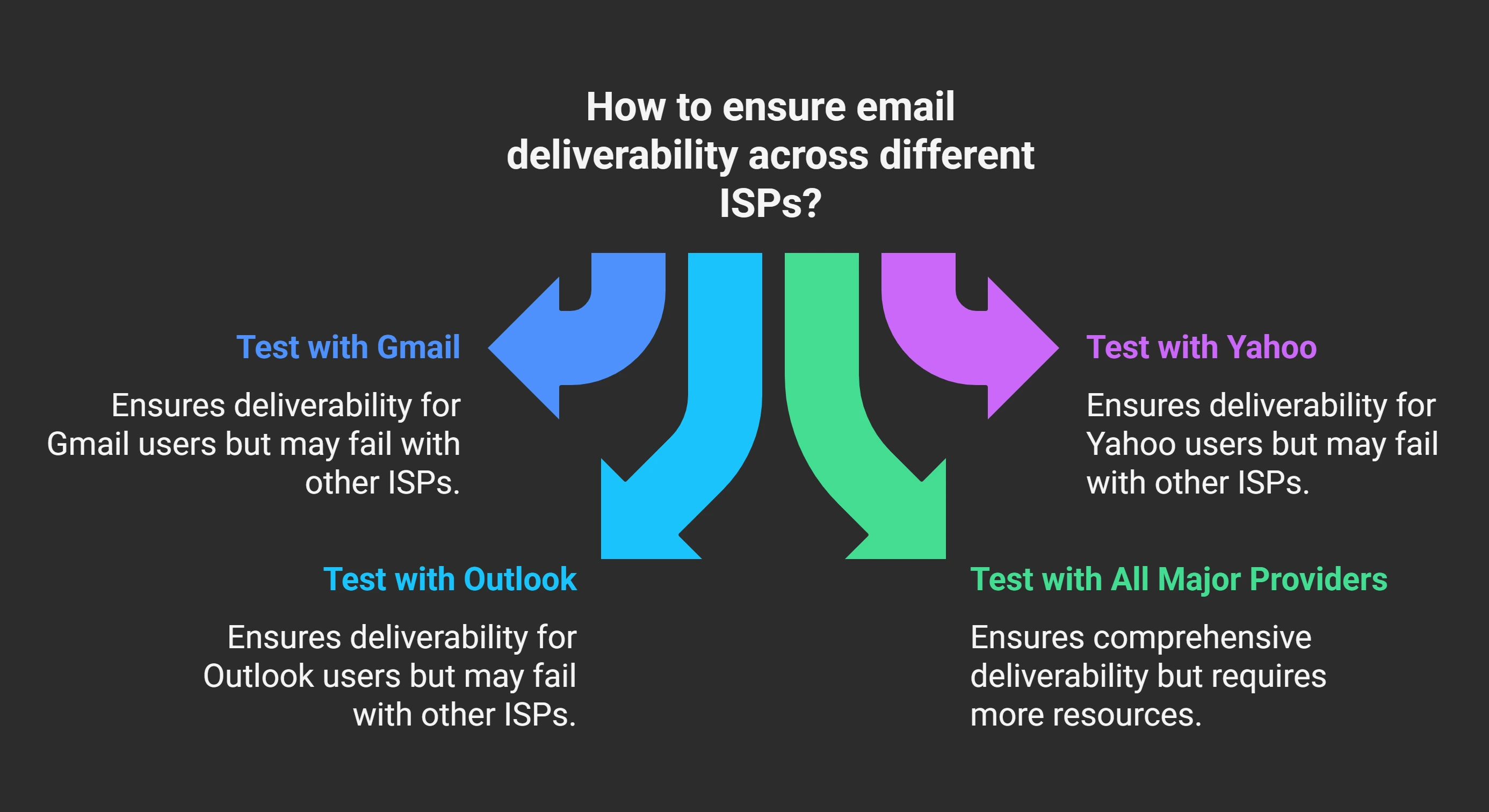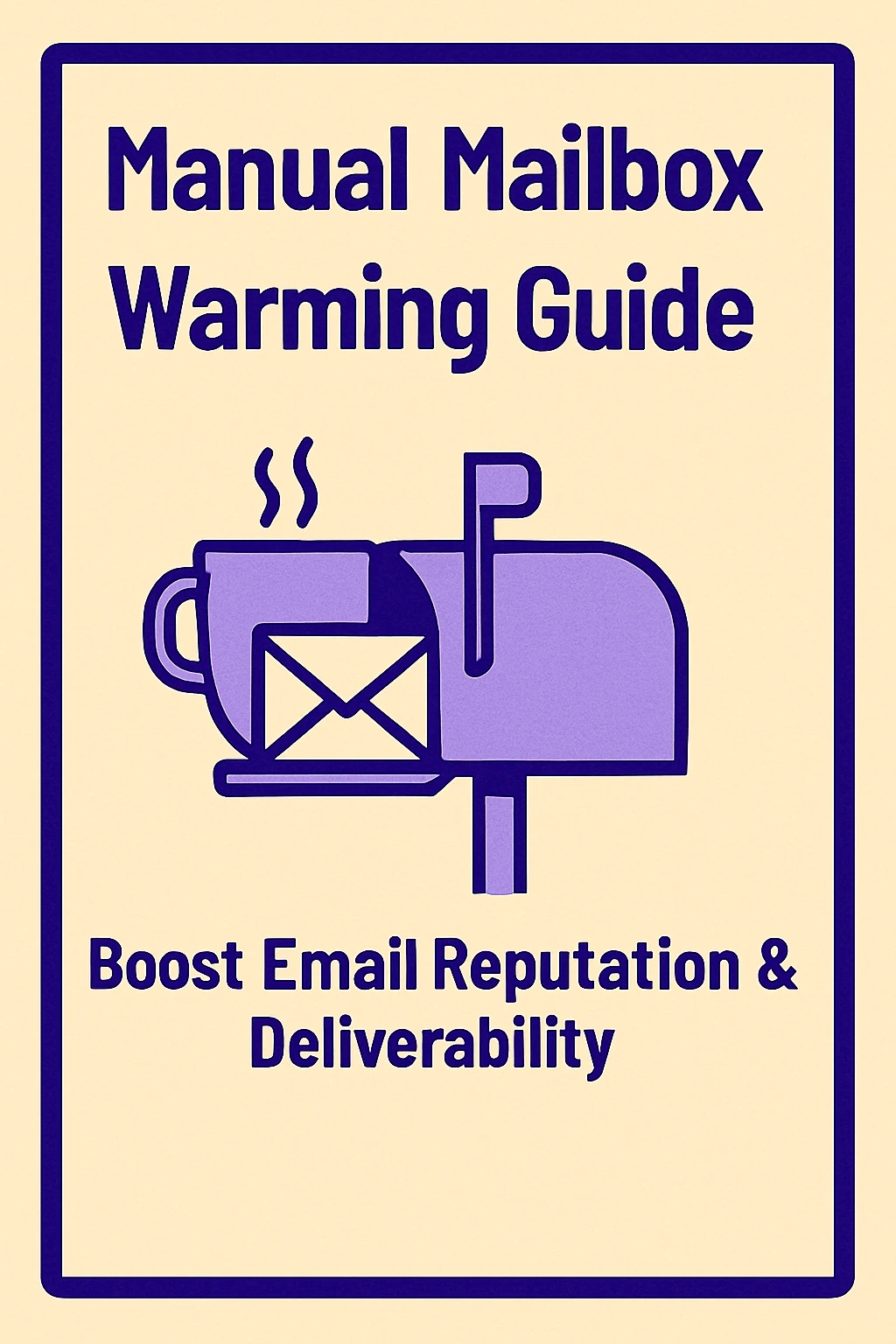Best SMTP Testing Tools 2025. Fix Email Failures Fast
This analysis examined SMTP testing tools that actually work in 2025's challenging email environment. The year brought significant changes to ISP filtering and authentication requirements that caught many organizations unprepared. I reviewed ten platforms that provide different capabilities for various organizational needs. From comprehensive solutions like MailKarma to specialized tools like SMTPDiagTool, each serves specific requirements for developers, marketers, and system administrators. The guidance covers practical implementation strategies including automation approaches and systematic troubleshooting methods. Understanding these tools helps ensure emails reach intended recipients despite increasingly complex delivery requirements. Regular SMTP testing prevents delivery failures, protects sender reputation, and maintains effective communication channels. Investment in appropriate testing tools provides measurable returns through improved deliverability and reduced technical problems.

Email systems have gotten a lot more complicated this year. Over the last eight months, I’ve worked with clients across industries who suddenly saw their emails stop landing in inboxes. Not because they changed anything, but because the rules quietly shifted beneath them.
In early 2025, Gmail, Yahoo, Outlook, and others rolled out silent updates to how they handle authentication, spam filters, and sender reputation. Companies using bare-minimum monitoring tools got hit hard. Those using robust SMTP testing tools? They spotted the problems early and adapted. That’s the difference between staying visible and disappearing from inboxes overnight.
Why SMTP Testing Matters in 2025
New Spam Filters, Stricter Enforcement

Gmail introduced updated algorithms in March that reinterpreted SPF and DKIM logic. Yahoo adjusted its spam filtering in April. By May, Outlook had altered how it processed DKIM signatures entirely.
One of my clients, who had been reliably hitting 98% delivery rates, watched that drop to 60% in under two weeks. Their DNS settings hadn’t changed. Gmail’s expectations had.
Inconsistent Standards Across ISPs

The real kicker? What passes Gmail’s filters might not make it through Yahoo’s. Outlook might reject something Gmail accepts. ISPs aren’t aligned, which means testing needs to account for every major provider individually.
The Hidden Costs of SMTP Delivery Failures
SMTP errors often go unnoticed. Unlike obvious bounces, many failures are silent. The email appears “sent,” but it vanishes into the void due to misconfigured SPF, missing DKIM, or failed TLS negotiation.
I’ve seen sales fall apart because a contract email never made it. The sender got no bounceback. No warning. Just radio silence until the client called, wondering where the deal went.
These quiet failures erode your email reputation. And rebuilding trust with ISPs can take months.
SMTP Testing vs. Basic Email Checks
Most people test email delivery by sending a message to themselves. If it shows up, they assume all is well. But real SMTP testing goes much deeper.
What Proper Testing Does
- Checks MX records and DNS settings
- Verifies SPF, DKIM, and DMARC configurations
- Simulates SMTP server handshakes
- Analyzes SMTP response codes
- Scans blacklist databases
- Tests TLS/STARTTLS encryption
This isn’t just about sending. It’s about evaluating your infrastructure the way ISPs do.
What to Look for in a 2025-Ready SMTP Testing Tool
After reviewing dozens of tools this year, here’s what separates the good from the great:
1. Real-Time SMTP Feedback
You need immediate, actionable diagnostics, not delayed summaries. The best tools flag server misconfigurations, handshake failures, and authentication issues as they happen.
2. Deep DNS and Blacklist Monitoring
If you’re on a random regional blacklist, delivery to that region can fail without notice. Strong tools scan hundreds of databases and validate all authentication records, SPF, DKIM, DMARC.
3. Authentication Testing
Every ISP interprets protocols slightly differently. Your tool should simulate checks across Gmail, Yahoo, Outlook, and more. Surface-level SPF/DKIM existence isn’t enough anymore.
4. Bounce and Inbox Placement Simulation
Don’t wait until real emails bounce. Modern tools predict placement outcomes, whether your email lands in inboxes, spam folders, or gets dropped.
5. Logs, Alerts, and Integration
Enterprise-grade tools log every result, trigger alerts when something breaks, and offer APIs so you can build them into your CI/CD pipeline.
Top SMTP Testing Tools for 2025
Here are the SMTP testing platforms that deliver in this year’s tough email landscape:
1. MailKarma SMTP Testing Suite
MailKarma’s SMTP Testing Suite offers a full-spectrum view of your email’s deliverability health. It tests your emails across inbox placement, spam triggers, blocklist presence, and even predicts how ESPs like Gmail or Yahoo will treat your message.
Key Features:
- Real-time spam score detection
- Inbox placement previews (Gmail, Outlook, etc.)
- Header, content, and DNS analysis
- Built-in deliverability audit tools
Pros:
Simple, intuitive dashboard
Built specifically for marketers and deliverability teams
Works with cold email tools, CRMs, and email platforms
Cons:
Doesn’t provide TLS encryption checks
No support for legacy command-line testing
Best For:
Email marketers, growth teams, and sales ops who want high deliverability and need actionable fixes before sending large campaigns.
2. MXToolbox SMTP Diagnostic Tools
MXToolbox has been the go-to SMTP diagnostic utility for years. It provides deep server insights, checks for blacklisting, SPF/DKIM issues, and more. Perfect for those who want quick, technical answers from a trusted source.
Key Features:
- Blacklist monitoring across 500+ services
- SMTP banner checks and response time tracking
- MX record, DNS, and reverse DNS verification
- Detailed logs with IP-level insights
Pros:
Reliable, accurate results for tech troubleshooting
Free access to many tools
No sign-up required
Cons:
Outdated interface
Less actionable for non-technical users
Best For:
System administrators and technical marketers looking for reliable, fast, and no-frills SMTP diagnostics.
3. Mailtrap Email Testing
Mailtrap is a sandbox SMTP testing tool that lets dev teams safely inspect emails before going live. You can catch errors in headers, formatting, and content structure inside a controlled staging inbox.
Key Features:
- Shared testing inboxes for QA teams
- HTML and plain text previews
- Spam analysis and header breakdown
- Integration-ready API
Pros:
Built for collaboration across dev and QA
Secure test environment with no real sending
Works seamlessly with CI/CD pipelines
Cons:
Not suitable for inbox placement or blacklist checks
Primarily geared toward development teams.
Best For:
Developers, QA testers, and product teams are shipping new transactional emails or automation workflows.
4. Microsoft SMTPDiagTool
SMTPDiagTool by Microsoft is a no-frills, command-line utility that diagnoses SMTP communication issues. It checks basic SMTP responses, login configurations, and DNS resolutions from your machine to your mail server.
Key Features:
- Command-line interface
- DNS, port, and SMTP relay verification
- TLS and authentication testing
- Lightweight utility for quick checks
Pros:
Blazingly fast with no overhead
Easy to automate in scripts
Ideal for internal SMTP servers
Cons:
Command-line only; no visual UI
Limited functionality for modern deliverability needs
Best For:
DevOps, sysadmins, and advanced users are comfortable with terminal-based diagnostics.
5. Wormly SMTP Tester
Wormly dives deep into TLS and STARTTLS encryption diagnostics for SMTP connections. If secure email delivery matters to you, this tool will tell you exactly what’s failing during the handshake process.
Key Features:
- TLS handshake logging
- STARTTLS configuration validation
- SMTP authentication visibility
- Root certificate chain testing
Pros:
Accurate insight into encryption and auth failures
Great for email security audits
Browser-based; no downloads needed
Cons:
Lacks deliverability or spam score testing
Not designed for marketers
Best For:
Security teams, compliance auditors, or sysadmins maintain an encrypted email infrastructure.
6. SSL-Tools SMTP Test
SSL-Tools focuses on validating your SMTP server’s encryption setup. It provides visual feedback on certificate chains, TLS versions, and even weak cipher usage, crucial for passing audits or maintaining GDPR-grade compliance.
Key Features:
- TLS/SSL certificate inspection
- STARTTLS negotiation logging
- Email server vulnerability reporting
- SSL health grade for SMTP
Pros:
Straightforward UI with technical depth
Great for compliance and security audits
Free and accessible
Cons:
No inbox placement or email content checks
Lacks real-time email testing capabilities
Best For:
Organizations focused on email security, data privacy compliance, or those operating in regulated industries.
7. Postmark SMTP Check Tool
Postmark, known for lightning-fast transactional email delivery, also offers an SMTP check tool that focuses on performance and reliability. It shows how fast your emails get sent and what might be slowing things down.
Key Features:
- SMTP speed and delay tracking
- Authentication response analysis
- Inbox delivery timeline
- Error tracing for SMTP retries
Pros:
Incredibly fast results
Great insight for transactional senders
Reliable infrastructure
Cons:
More focused on speed than inbox placement
Not ideal for marketing or cold email workflows
Best For:
Product teams and SaaS companies are sending critical alerts, receipts, and transactional messages.
8. SocketLabs SMTP Diagnostics
SocketLabs offers SMTP diagnostics optimized for bulk senders. It looks at your infrastructure from a performance, throttling, and content header perspective, helping large-scale senders debug high-volume issues.
Key Features:
- High-volume SMTP throughput tests
- Real-time bounce and retry analysis
- Throttling and header inspection
- In-depth log capture for large sends
Pros:
Tailored to high-scale outbound operations
Strong support for cold email and newsletter volume
Great documentation
Cons:
Not free for most advanced tests
UI can be a bit cluttered for new users
Best For:
Email service providers, SaaS platforms, and marketers are sending millions of emails per month.
9. Gmass Deliverability Tools
Gmass delivers a Gmail-specific SMTP test that shows how your message will behave inside Google’s spam filters. It’s perfect for cold email senders and Gmail-based outreach teams who want inbox visibility.
Key Features:
- Gmail inbox/spam/promo folder prediction
- Bounce and block simulation
- Domain and IP reputation checks
- Open and click testing
Pros:
Excellent for Gmail deliverability
Easy to use, especially for outreach teams
Built into Gmail workflow
Cons:
Gmail-specific; doesn’t test other ESPs
The free tier has limitations on volume.
Best For:
Cold emailers, outreach specialists, and sales teams use Gmail as their primary sending platform.
10. DNSstuff SMTP Test
DNSstuff’s SMTP tester blends basic SMTP checks with in-depth DNS health reports. You’ll catch issues in your SPF, PTR, DMARC, or MX records that silently kill your deliverability behind the scenes.
Key Features:
- SPF, PTR, and DKIM validation
- DNS lookup and error breakdown
- SMTP port connectivity testing
- Reverse DNS and domain alignment
Pros:
Beginner-friendly interface
Clear fixes for common DNS issues
All-in-one DNS + SMTP toolkit
Cons:
Limited in-depth deliverability testing
Lacks inbox prediction tools
Best For:
Marketers or agencies are troubleshooting silent email failures or investigating poor deliverability linked to DNS errors.
Getting SMTP Testing Right: A Practical Guide
SMTP testing isn’t something you do once. It needs to be built into your ongoing delivery strategy.
Step-by-Step Testing Workflow
- Check Connectivity
Test server connection and port accessibility (25, 587, 465). - Verify Authentication
Confirm login credentials and test with SMTP AUTH enabled. - Validate DNS Records
Run checks on SPF, DKIM, and DMARC to confirm they’re accurate and propagate properly. - Test Encryption
Ensure TLS/STARTTLS works and certificates are valid. - Blacklist Check
Monitor regularly; IP listings can change daily. - Simulate Inbox Placement
Use tools that preview where emails land: inbox, promotions, or spam.
Automating SMTP Testing in Your Workflow
Why Automation Matters
Email infrastructure changes often. Waiting for something to break before testing creates unnecessary risk.
Use CI/CD Pipelines
Tools like MailKarma, MXToolbox, and Postmark offer APIs to trigger tests when code changes or deploys occur. Set these up so SMTP testing happens automatically.
Set Alerts for Critical Issues
Automated alerts should notify you if your domain gets blacklisted, SPF fails, or SMTP handshakes start erroring out.
Why SMTP Fails: Common Causes
Even experienced teams miss small misconfigurations. Here are the biggest culprits behind silent delivery failures:
- Broken SPF or DKIM records
Mistyped entries or outdated configurations break authentication. - Blacklisting
High complaint rates or spam traps will get you blocked fast. - TLS misconfiguration
Expired or misaligned certificates fail encryption checks. - Port blocking
Many ISPs block certain SMTP ports. Testing verifies whether alternate ports are needed. - Credential failures
Expired or incorrect SMTP logins often go unnoticed until users report problems. - ISP rate limiting
Sending too fast without proper warm-up can trigger throttling.
Choosing the Right SMTP Tool for You
Not every business needs every feature. Here's a simplified breakdown:
Final Thoughts: Why Ongoing SMTP Testing Is Non-Negotiable in 2025
Email delivery has become fragile. The rules are shifting faster than most companies can keep up with, and the cost of getting it wrong is steep.
Whether you’re a developer, marketer, or IT lead, reliable SMTP testing is your frontline defense. Don’t rely on sending test emails and crossing your fingers. Invest in tools that see what ISPs see.
If you’re serious about reaching inboxes, MailKarma.ai is a strong place to start. It’s more than diagnostics, it’s insight.
FAQs
Q1. What exactly is an SMTP testing tool?
It's a tool that checks your email server’s health, so your emails don’t get lost, bounced, or spammed.
Q2. How do these tools improve email deliverability?
They catch DNS, blacklist, and encryption issues before your campaigns get filtered or blocked.
Q3. Are these tools only for developers?
Not at all. Marketers use them too, to ensure their emails actually reach customers.
Q4. Can SMTP testing be automated?
Yes. Many tools support APIs or CI/CD triggers to run checks without manual effort.
Q5. What’s the best free SMTP tool in 2025?
MXToolbox and SSL-Tools offer excellent free options. For deeper insight, MailKarma is worth exploring.
Recent Blogs
FAQs: Everything You’re Wondering About Cold Email Deliverability & MailKarma’s Infrastructure
MailKarma is a dedicated email infrastructure solution built exclusively for cold email outreach. Unlike shared inbox tools or general ESPs, MailKarma gives you complete control over your sending setup—private US IPs, clean domains, and expert-backed deliverability practices. Built by cold email pros, MailKarma is optimized to scale outreach without landing in spam.
Because MailKarma sets up private infrastructure—including custom domains and mailboxes—it doesn’t offer a traditional free trial. However, you can explore the platform, view your dashboard, and test features before provisioning infrastructure. Our private dedicated email servers cost $150 per server plus $0.001 per email sent, making it extremely cost-effective for high-volume cold email campaigns. For Gmail Workspace solutions, pricing starts at $3.50 per email with a 10-email minimum, dropping to $2.50 per email for volumes over 100 emails. This transparent pricing model ensures you only pay for what you use while maintaining enterprise-grade email deliverability.
Yes. MailKarma automatically sets up SPF, DKIM, and DMARC records using best-in-class standards. No technical hassle—our system handles everything behind the scenes, and our support team is always ready to assist if needed.
Every MailKarma subscription includes:
- Automated DNS setup (SPF, DKIM, DMARC)
- Private mailbox hosting
- Ongoing deliverability optimization
- Server monitoring and uptime guarantees
It depends on your monthly sending volume and the number of contacts per sequence. To simplify this, MailKarma includes a volume-based calculator inside the app to help you choose the optimal setup for scale, safety, and inbox placement.
Gmail and Outlook aren't built for cold outreach—they throttle volume, rotate IPs, and limit deliverability. MailKarma gives you:
- Dedicated infrastructure
- Warmed IPs and aged domains
- No shared resources
- Built-in best practices for cold outreach
It's the infrastructure your outreach actually needs.

.png)



